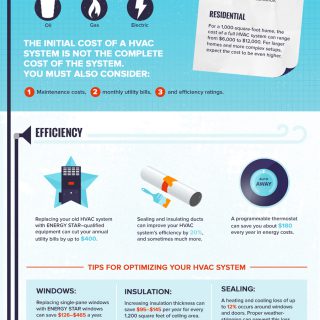The Future Of Home Home Heating - Exactly How Heat Pump Technology Is Advancing
The Future Of Home Home Heating - Exactly How Heat Pump Technology Is Advancing
Blog Article
Web Content Writer-Fraser MacGregor
Heatpump will be a vital modern technology for decarbonising home heating. In a situation consistent with federal governments' introduced energy and environment dedications, their worldwide capability increases by 2030, while their share in home heating rises to one-quarter.
They function best in well-insulated homes and depend on power, which can be supplied from a renewable power grid. Technical breakthroughs are making them more efficient, smarter and more affordable.
Fuel Cells
Heatpump make use of a compressor, refrigerant, coils and fans to relocate the air and heat in homes and devices. They can be powered by solar power or electrical energy from the grid. They have been gaining popularity as a result of their inexpensive, silent procedure and the capacity to create electrical energy throughout peak power need.
Some firms, like IdaTech and BG MicroGen, are dealing with fuel cells for home heating. These microgenerators can replace a gas boiler and create a few of a home's electric demands with a link to the electricity grid for the remainder.
But there are factors to be unconvinced of using hydrogen for home heating, Rosenow states. It would be expensive and ineffective compared to other technologies, and it would certainly add to carbon exhausts.
Smart and Connected Technologies
Smart home modern technology allows homeowners to attach and manage their tools from another location with the use of mobile phone apps. As an example, smart thermostats can learn your home heating preferences and immediately get used to optimize power consumption. Smart lighting systems can be regulated with voice commands and automatically turn off lights when you leave the space, reducing energy waste. And wise plugs can keep an eye on and handle your electric usage, permitting you to identify and limit energy-hungry devices.
The tech-savvy household portrayed in Carina's meeting is a good illustration of how occupants reconfigure area heating practices in the light of new wise home innovations. They depend on the devices' automatic functions to perform day-to-day modifications and concern them as a convenient ways of performing their home heating methods. Because of this, they see no reason to adapt their techniques better in order to make it possible for flexibility in their home power demand, and interventions targeting at doing so might deal with resistance from these households.
Power
Since heating up homes make up 13% people exhausts, a button to cleaner alternatives could make a huge distinction. But the technology deals with obstacles: It's pricey and calls for comprehensive home improvements. And it's not constantly compatible with renewable resource sources, such as solar and wind.
Until just recently, electrical heatpump were too expensive to compete with gas models in the majority of markets. Yet new innovations in layout and materials are making them a lot more affordable. And much better cool environment efficiency is allowing them to operate well even in subzero temperature levels.
The following step in decarbonising heating may be using heat networks, which draw heat from a central source, such as a neighboring river or sea inlet, and distribute it to a network of homes or buildings. That would lower carbon emissions and enable houses to make use of renewable resource, such as green electrical power from a grid supplied by renewables. This choice would be less costly than switching over to hydrogen, a fossil fuel that needs brand-new infrastructure and would only lower CO2 exhausts by 5 percent if coupled with enhanced home insulation.
Renewable resource
As electricity rates drop, we're starting to see the very same trend in home heating that has actually driven electric autos into the mainstream-- yet at an also faster speed. https://www.bobvila.com/articles/home-warranty-for-rental-property/ for impressive homes has actually been pressed additionally by new research.
Renewables make up a significant share of modern-day warm consumption, yet have actually been given minimal policy attention around the world contrasted to various other end-use markets-- and even much less attention than power has. Partially, this mirrors a mix of customer inertia, split motivations and, in numerous nations, aids for fossil fuels.
New innovations can make the shift much easier. As an example, heatpump can be made more power effective by changing old R-22 cooling agents with brand-new ones that do not have the high GWPs of their predecessors. Some experts also picture area systems that draw warmth from a nearby river or sea inlet, like a Norwegian arm. The cozy water can after that be utilized for heating & cooling in a community.